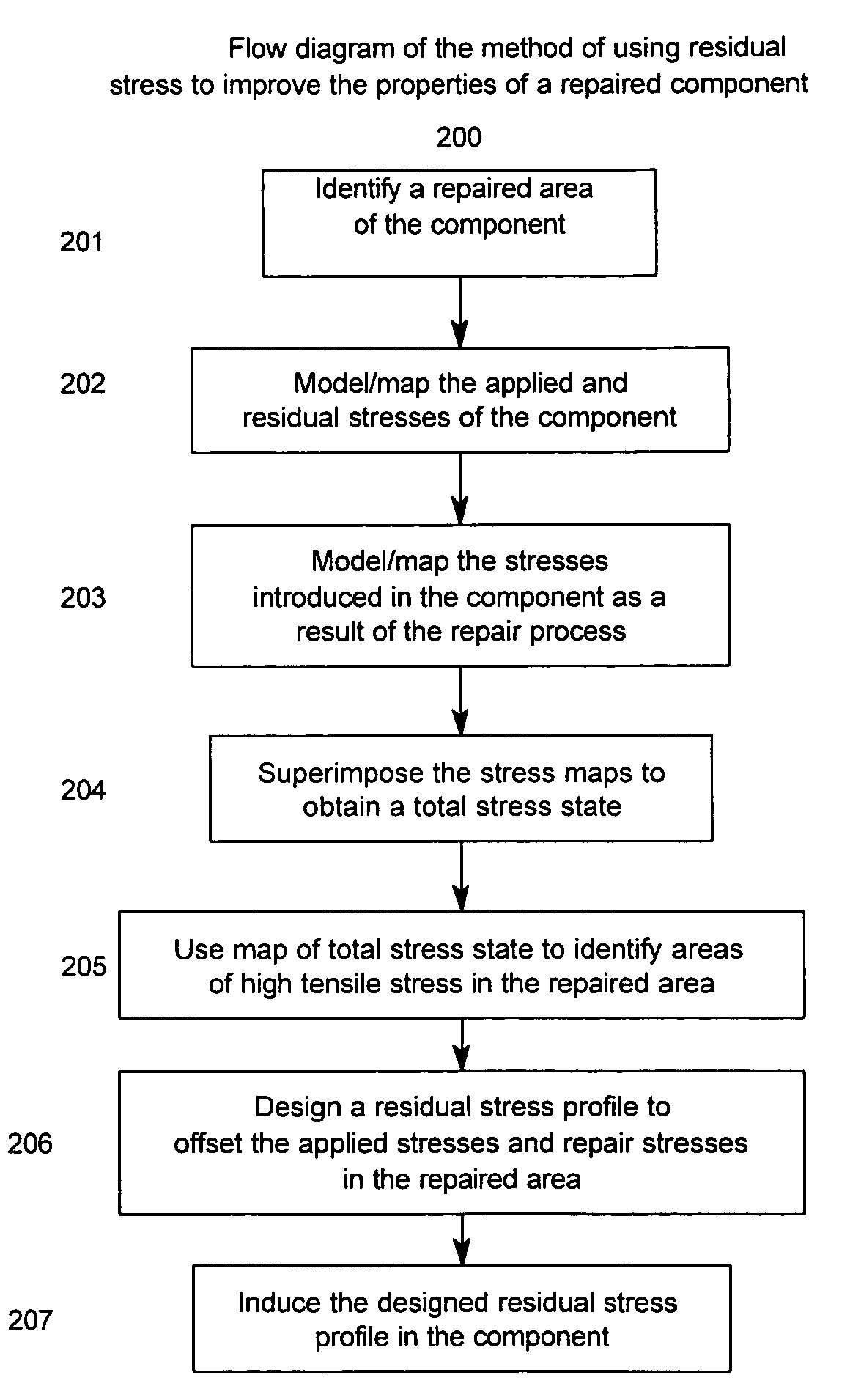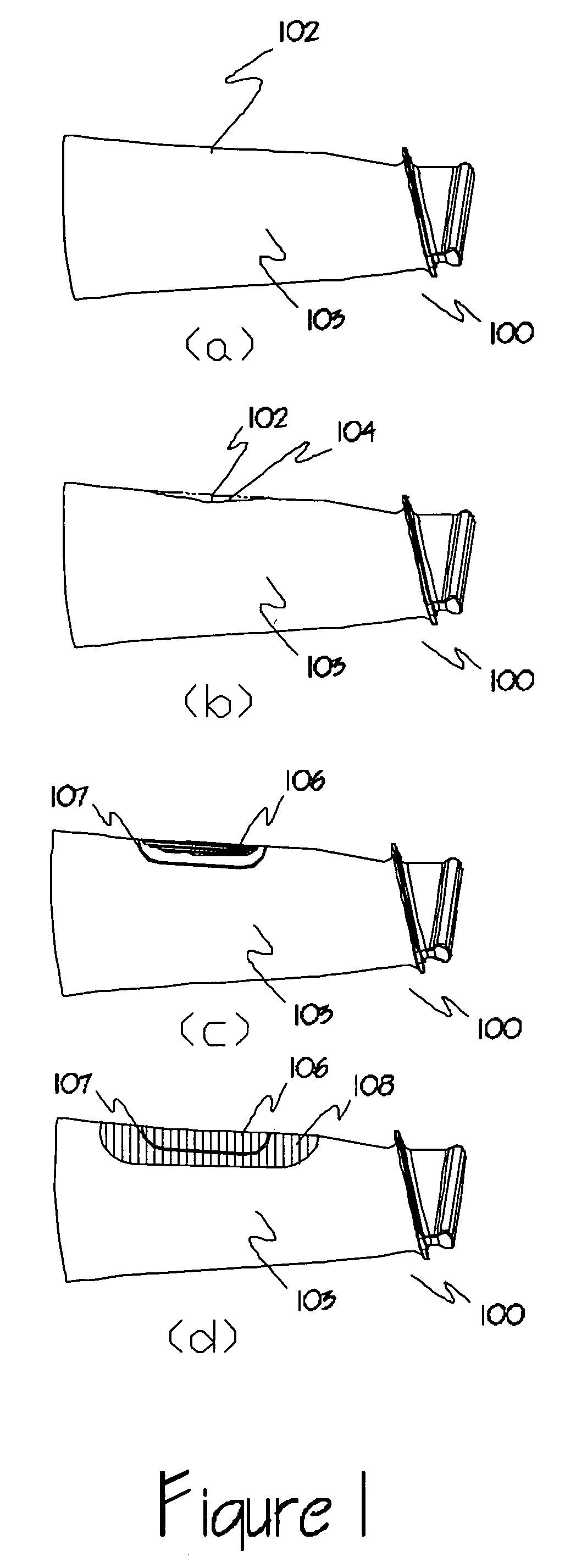Method of improving the properties of a repaired component and a component improved thereby
a technology of fatigue performance and mechanical properties, which is applied in the direction of mechanical equipment, machines/engines, manufacturing tools, etc., can solve the problems of fatigue cracks in the areas of components subject to high operational stresses, components susceptible to high cycle fatigue (hcf) components susceptible to high cycle fatigue and other stress related failures, so as to improve material and mechanical properties, and improve the effect of material and mechanical properties
- Summary
- Abstract
- Description
- Claims
- Application Information
AI Technical Summary
Benefits of technology
Problems solved by technology
Method used
Image
Examples
Embodiment Construction
[0030]Metallic components subject to cyclic loading and high-applied stresses, such as the blading members of turbine engines, are susceptible to the development of fatigue cracks that can ultimately lead to the failure of the component. The occurrence of foreign object damage, such as along the leading and trailing edges of blading members of turbo machinery components, hastens the development of fatigue cracks as the damage locations act as stress risers or stress concentrators. Similarly, the abrasion and erosion of the tips of blading members as a result of contact with sealing members around the periphery of the engine and the erosion of blading members from contact with super-heated steam not only decreases the aerodynamic efficiency of the engine, but may also serve as initiation sites for fatigue cracks.
[0031]For an exemplary illustration, when a fatigue crack or similar damage is found in a blading member of a rotating turbo machinery component, the blading member is remove...
PUM
| Property | Measurement | Unit |
|---|---|---|
| area | aaaaa | aaaaa |
| compressive stresses | aaaaa | aaaaa |
| applied stress | aaaaa | aaaaa |
Abstract
Description
Claims
Application Information
 Login to View More
Login to View More - R&D
- Intellectual Property
- Life Sciences
- Materials
- Tech Scout
- Unparalleled Data Quality
- Higher Quality Content
- 60% Fewer Hallucinations
Browse by: Latest US Patents, China's latest patents, Technical Efficacy Thesaurus, Application Domain, Technology Topic, Popular Technical Reports.
© 2025 PatSnap. All rights reserved.Legal|Privacy policy|Modern Slavery Act Transparency Statement|Sitemap|About US| Contact US: help@patsnap.com



